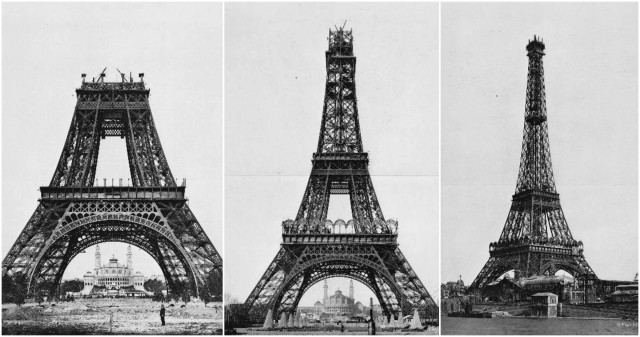
“I ought to be jealous of the tower. She is more famous than I am.”
― Gustave Eiffel
Hemingway famously dubbed Paris as “The moveable Feast” and you don’t have to be a writer to know that the Eiffel Tower is the ”Steel beauty”, the ”Guitar in the sky”, the ”Iron lady” of the French Capital.
Constructed in 1889 as the entrance to the 1889 World’s Fair, it was initially criticized by some of France’s leading artists and intellectuals for its design but has become a global cultural icon of France and one of the most recognisable structures in the world. The tower is the tallest structure in Paris and the most-visited paid monument in the world: 6.98 million people ascended it in 2011.
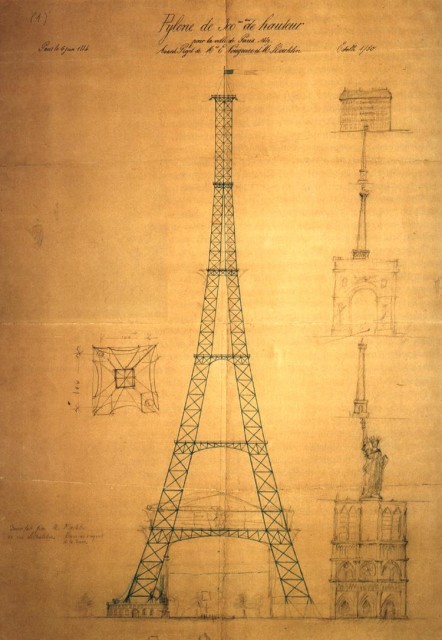
The design of the Eiffel Tower was the product of Maurice Koechlin and Émile Nouguier, two senior engineers working for the Compagnie des Établissements Eiffel, after discussions about a suitable centrepiece for the proposed 1889 Exposition Universelle, a world’s fair to celebrate the centennial of the French Revolution. Eiffel openly acknowledged that inspiration for a tower came from the Latting Observatory built in New York City in 1853. In May 1884, working at home, Koechlin made a sketch of their idea, described by him as “a great pylon, consisting of four lattice girders standing apart at the base and coming together at the top, joined together by metal trusses at regular intervals”. Eiffel initially showed very little enthusiasm, but he did approve a further study, and the two engineers then asked Stephen Sauvestre, the head of company’s architectural department, to contribute to the design. Sauvestre added decorative arches to the base of the tower, a glass pavilion to the first level, and other embellishments.
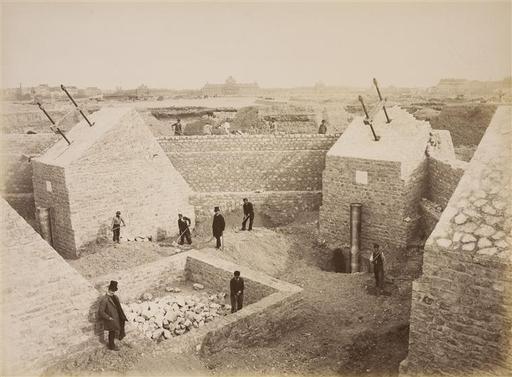
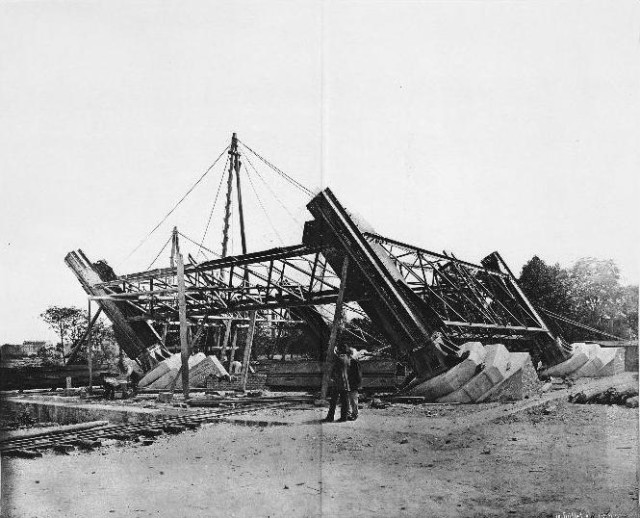
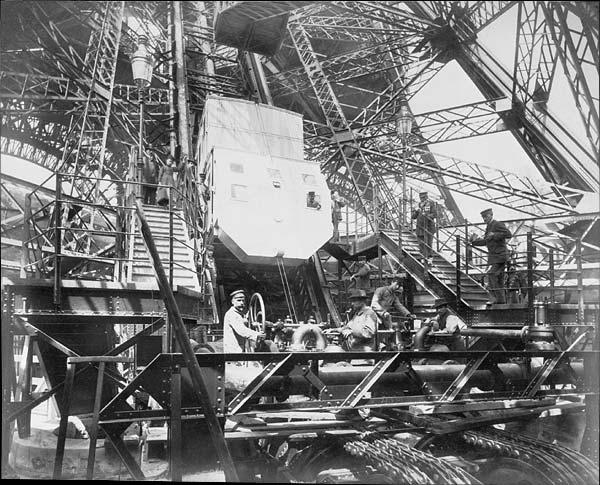
The new version gained Eiffel’s support: he bought the rights to the patent on the design which Koechlin, Nougier, and Sauvestre had taken out, and the design was exhibited at the Exhibition of Decorative Arts in the autumn of 1884 under the company name. On 30th March 1885, Eiffel presented his plans to the Société des Ingénieurs Civils; after discussing the technical problems and emphasising the practical uses of the tower, he finished his talk by saying the tower would symbolise,
“Not only the art of the modern engineer, but also the century of Industry and Science in which we are living, and for which the way was prepared by the great scientific movement of the eighteenth century and by the Revolution of 1789, to which this monument will be built as an expression of France’s gratitude.”
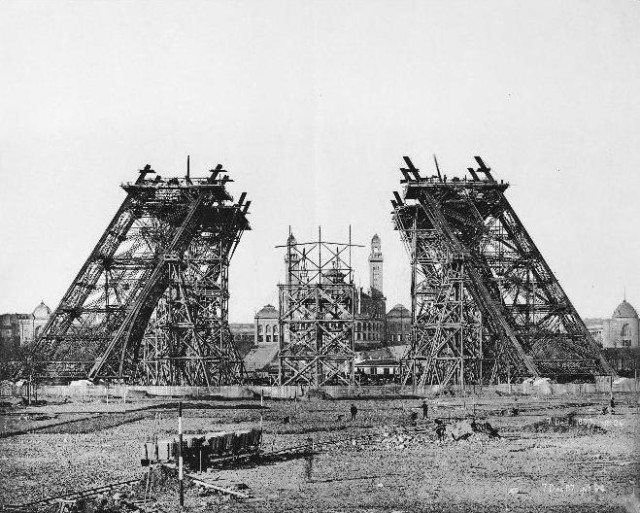
Work on the foundations started on the 28th January 1887.Those for the east and south legs were straightforward, with each leg resting on four 2 m (6.6 ft) concrete slabs, one for each of the principal girders of each leg. The west and north legs, being closer to the river Seine, were more complicated: each slab needed two piles installed by using compressed air caissons 15 m (49 ft) long and 6 m (20 ft) in diameter driven to a depth of 22 m (72 ft)to support the concrete slabs, which were 6 m (20 ft) thick. Each of these slabs supported a block of limestone with an inclined top to bear a supporting shoe for the ironwork.
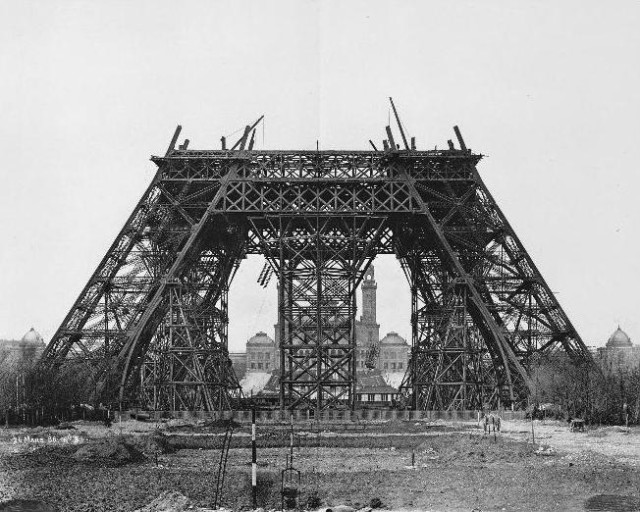
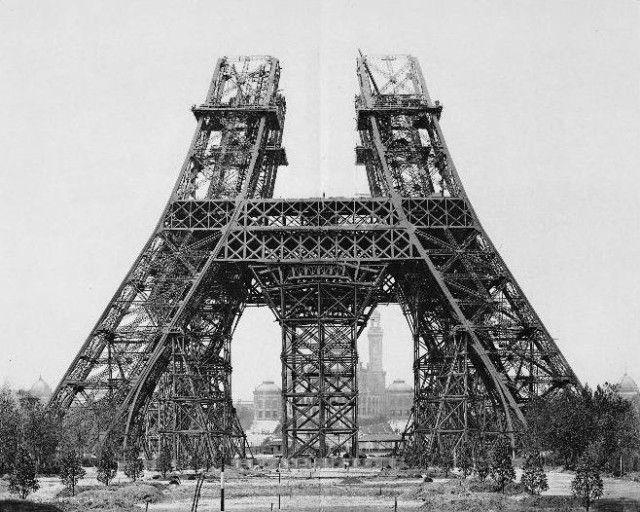
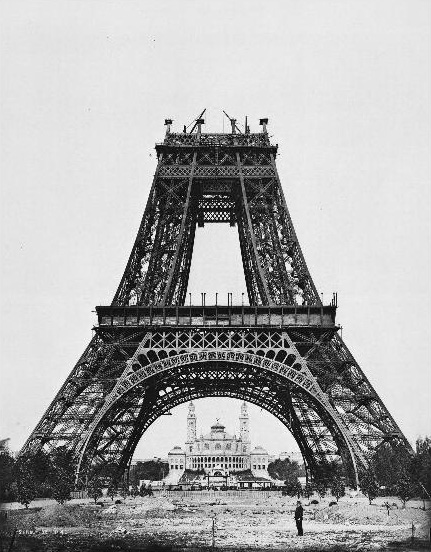
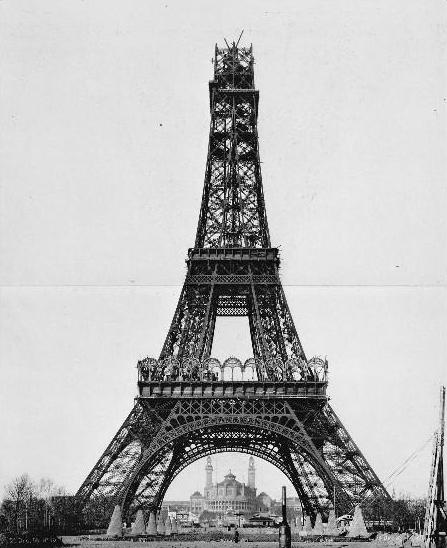
The main structural work was completed at the end of March 1889 and, on the 31st March, Eiffel celebrated by leading a group of government officials, accompanied by representatives of the press, to the top of the tower. Because the lifts were not yet in operation, the ascent was made by foot, and took over an hour, with Eiffel stopping frequently to explain various features. Most of the party chose to stop at the lower levels, but a few, including the structural engineer, Émile Nouguier, the head of construction, Jean Compagnon, the President of the City Council, and reporters from Le Figaro and Le Monde Illustré, completed the ascent. At 2:35 pm, Eiffel hoisted a large Tricolour to the accompaniment of a 25-gun salute fired at the first level
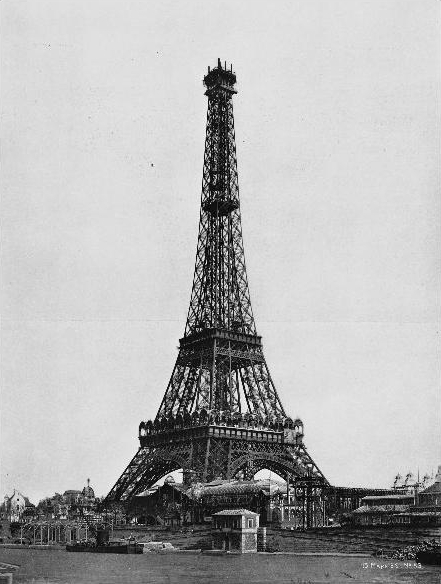
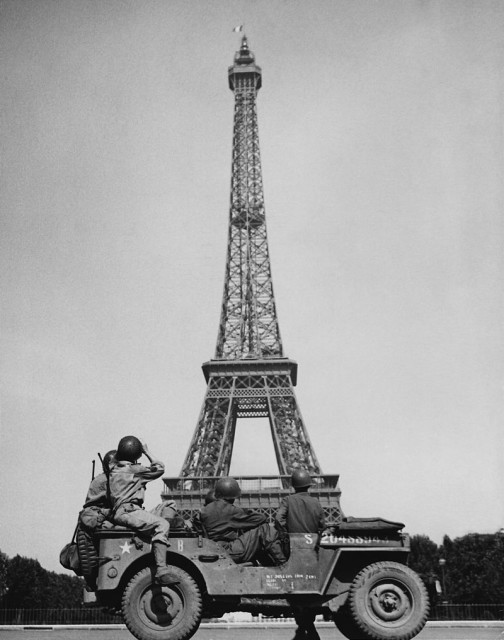
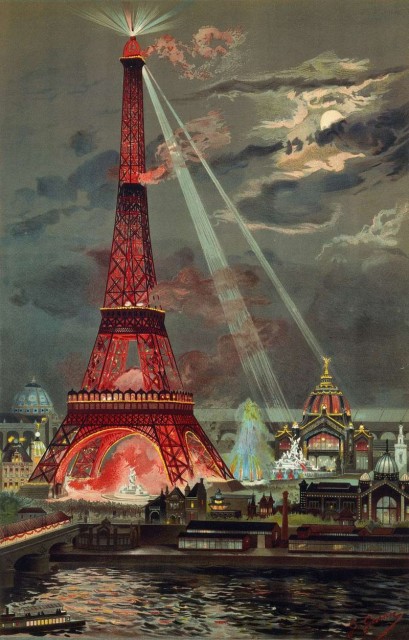
The tower is 324 metres (1,063 ft) tall, about the same height as an 81-storey building. Its base is square, 125 metres (410 ft) on a side. During its construction, the Eiffel Tower surpassed theWashington Monument to become the tallest man-made structure in the world, a title it held for 41 years until the Chrysler Building in New York City was built in 1930. Due to the addition of the aerial at the top of the tower in 1957, it is now taller than the Chrysler Building by 5.2 metres (17 ft). Not including broadcast aerials, it is the second-tallest structure in France, after the Millau Viaduct.
